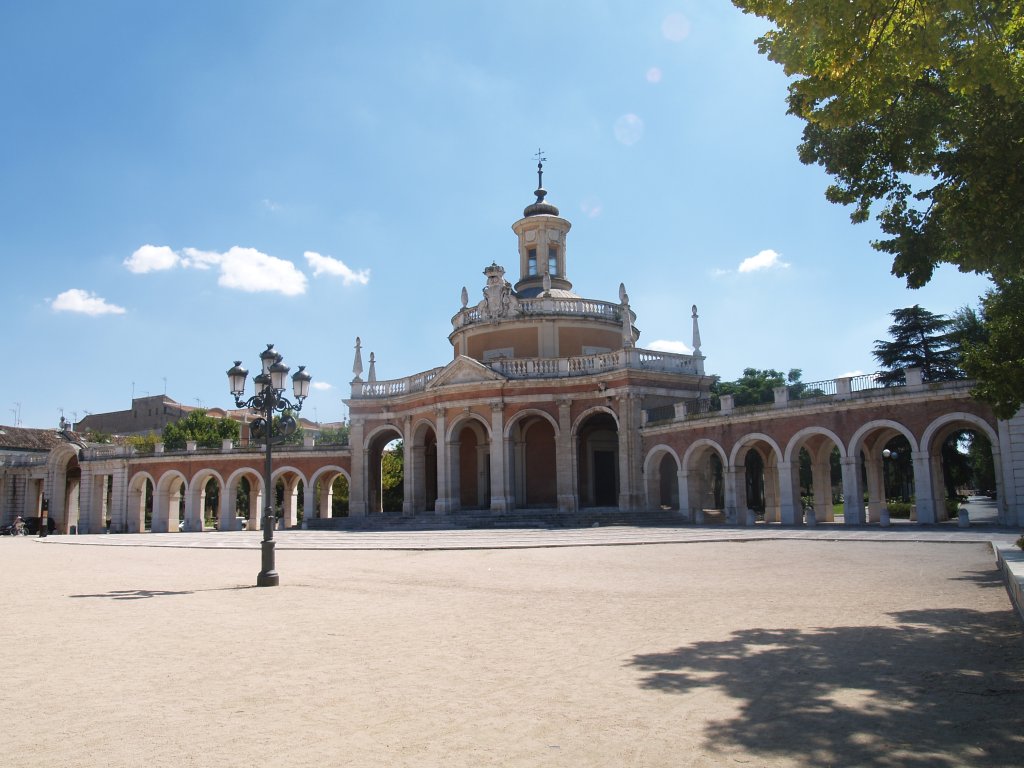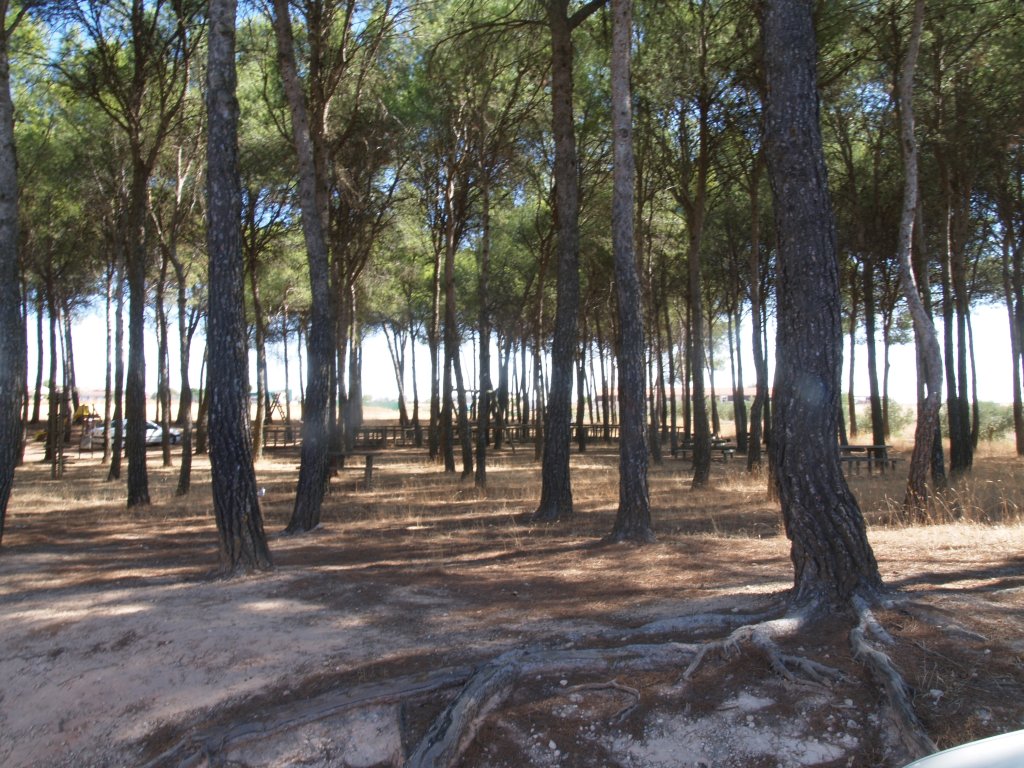Stage 19: Colmenar de Oreja - Aranjuez
Description

The Tagus on its way to the Real Sitio
This Stage begins in the high mountain town of Colmenar de Oreja. The Trail descends towards the Tagus, which unfailingly rolls towards the Real Sitio y Villa de Aranjuez.
The Stage begins in the southern edge of the town, next to the shrine of Santísimo Cristo del Humilladero, where the traveller can stock up on water. Further on is a rest area with pine trees and picnic tables.
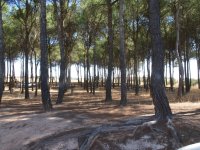
After a short descent, the track reaches the top of the plateau from where it is possible to view much of the route. After crossing the M-322, one can see the spectacular beauty of Valdegrederos, which this Stage will traverse in perpendicular in an enjoyable descent towards the River Tagus. The Trail meanders through olive groves and pine forests.
Special caution should be exercised when cycling this Stage, as some parts are very challenging and should be attempted only by experienced bikers. It is always possible to walk when it is not cyclable. Once in the bottom of the valley, the Trail is less strenuous, as it traverses through reeds and olive trees. Nine kilometres further on, the route arrives at an interStage that leads directly to the River Tagus.
This Stage, which straddles the provincial border, passes under a bridge on which runs the CM-322. After turning left, it traverses through fields of grain. The Trail continues westward, passing next to several hydraulic facilities associated with the River Tagus, including the wastewater treatment plant (WWTP).
The route drifts away temporarily from the river, but soon returns to its side via livestock trails. Fruits and vegetables (zucchini, peppers, tomatoes and melons) grow on the fertile lands surrounding the river. Indeed, the town of Villaconejos is renowned for the quality of its fruits and vegetables. The ruins of the Oreja Castle, perched atop the hills on the opposite bank, can also be admired.
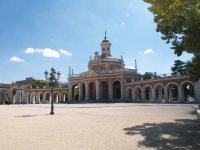
The shaded areas that abound are welcomed on hot days. The first interesting architectural ensemble that appears is Las Casas del Reloj. The route continues on a paved road flanked by large trees leading to Real Cortijo de San Isidro, home to its namesake shrine, situated in the Plaza Mayor.
The road veers south heading again towards the Tagus, which is about to reach the Real Sitio de Aranjuez. The entrance to this majestic city, a World Heritage Site, is through a 2-kilometre long straight road known as Calle de la Reina, which runs next to the Jardines del Principe. This large avenue is a feast for the senses of the traveller who has walked nearly 28 km from Colmenar. The wonderful monuments, including the Royal Palace, the churches of San Pascual, Alpajés and San Antonio, the former Barracks of Pavia, the Palacio de Godoy, and the bullring, are located in the city centre.
Sites of interest
Profile
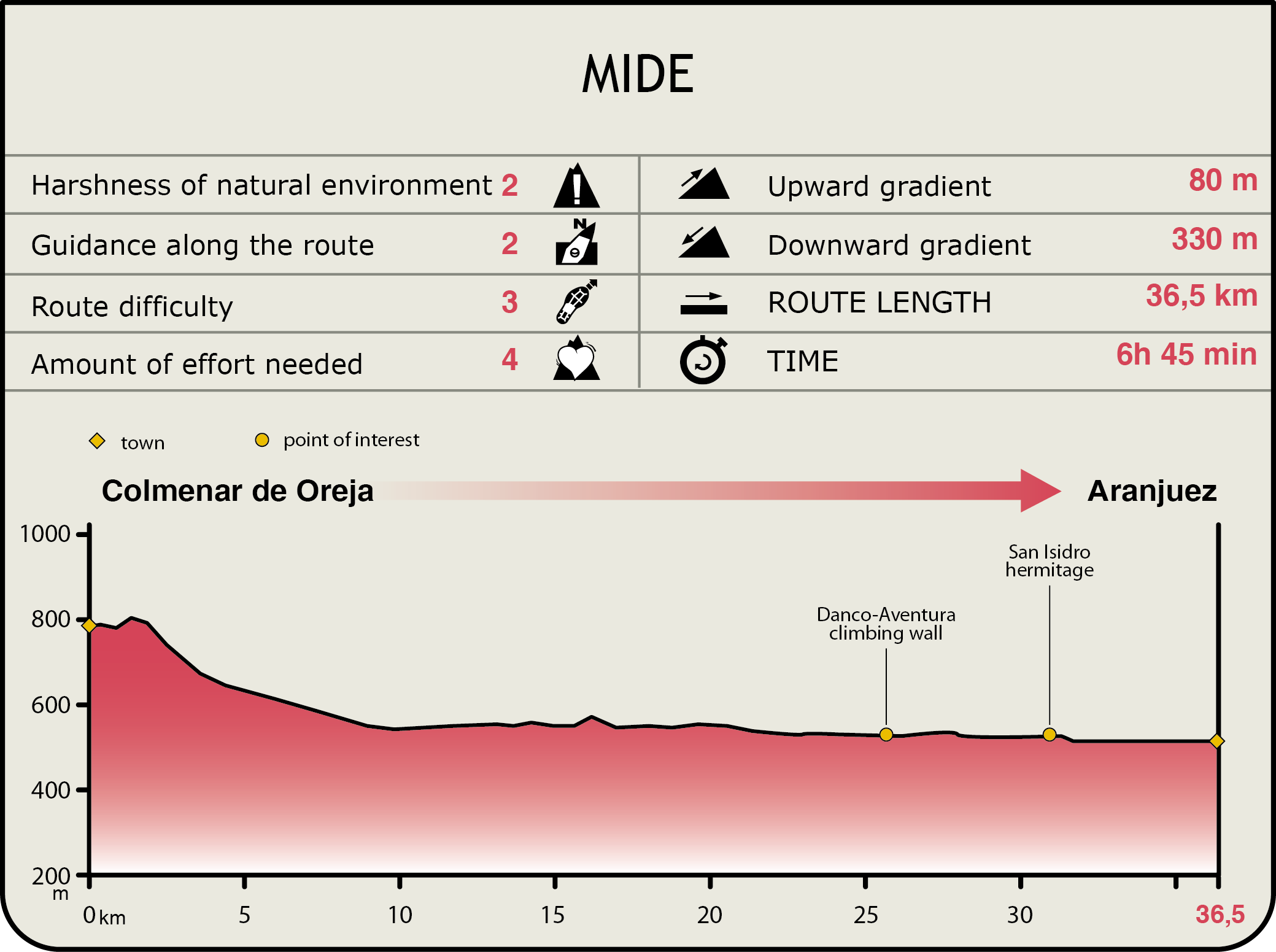
MIDE (Method for the Information of Excursions)
Featured
Further information
Paso de la Barca
Ferry crossings were a common sight in the Tagus; indeed, there were more crossings than bridges. They did not require large investments and were economically profitable. These wooden platforms, supported by ropes, were used by pedestrians to cross the river in both directions.
World Heritage Site
The city of Aranjuez was designated a UNESCO Cultural Landscape and World Heritage Site in 2001.
UNESCO recognised the exemplary interaction between humans and the natural environment in this region. Indeed, the wisdom and respect shown by humans in their interaction with nature resulted in a diverse and rich landscape; a territory where human activity has been decisive in transforming the environment to meet their needs, albeit without compromising the livelihood of countless forms of life that live in this diverse, ideal habitat.
The Paseos Históricos were the focal point of an elaborate plan that sought to recreate a natural world (gardens, woods, paths, streets and orchards) full of leisure activities and wildlife for the aesthetic enjoyment of kings. When one walks along these promenades, of which only the layout and ancient trees survive, it seems as if time comes to a standstill, and one realises that it is possible to live in harmony with nature.
Palacio de Aranjuez
The origins of this palace date back to 1561, when King Phillip II commissioned its construction to the architect Juan Bautista de Toledo, although Juan de Herrera completed the work. The palace was ravaged by fires in 1660 and 1665, as most of the buildings were made of wood. It was rebuilt by Santiago Bonavia in times of King Ferdinand VI. King Charles III commissioned the two side wings to Francisco Sabatino. The ornamentation of the building is made of brick with plinths, angles, cornices, window frames, balconies and doors made of stone from Colmenar de Oreja.
The other great attraction of the Real Sitio is its gardens. They were considered the most beautiful of their time, and still continue to captivate visitors. The Jardín de la Isla and Jardín del Rey blend Spanish concepts with Italian, Flemish and Muslim styles. The Jardín del Parterre, a French design, was built in the early eighteenth century, in times of Phillip V, the first Bourbon king.
The Jardín del Príncipe was built on a whim of Prince Charles IV, and is characterised by the large variety of plants it holds, with species from Asia and America, and myriad stone and marble fountains topped with statues of classical mythology. This is the largest garden.
The Real Casa del Labrador, commissioned by Charles IV, stands within this garden. One of Europe's most important neoclassical complex is housed in this small palace.
